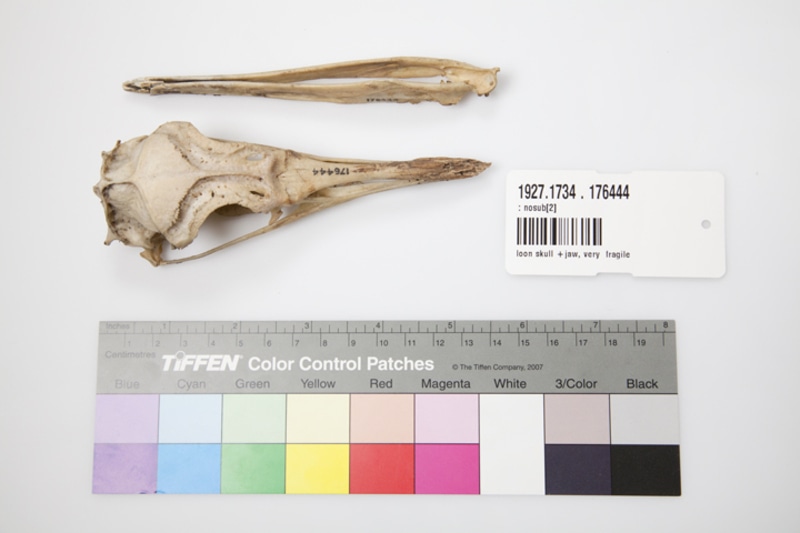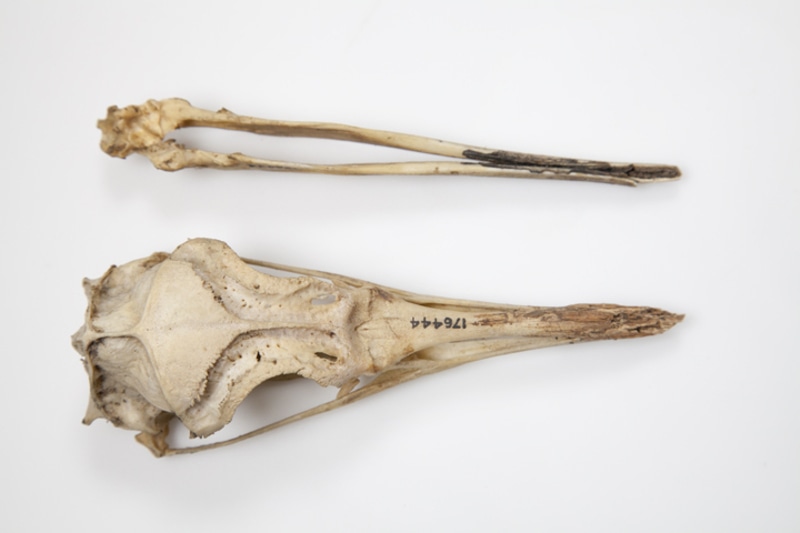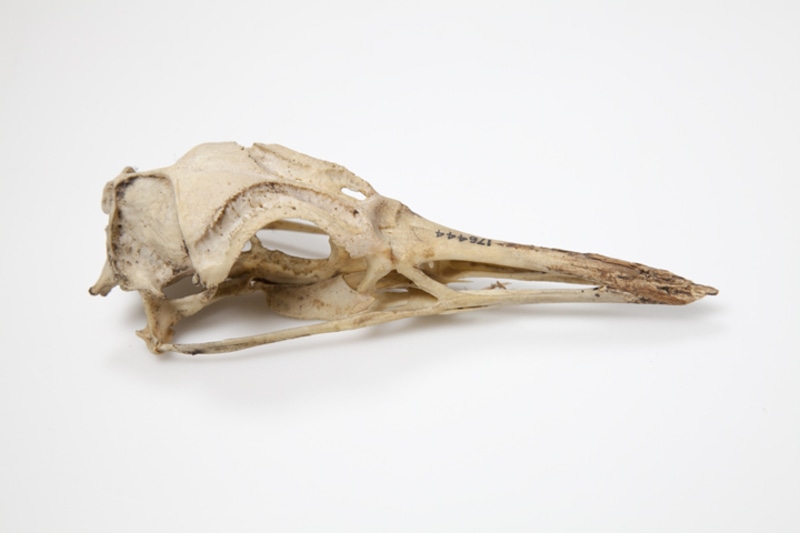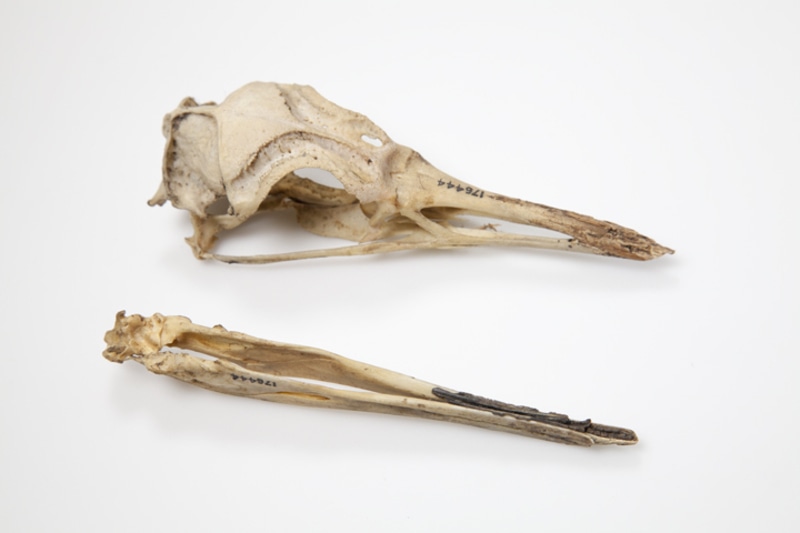loon skull +jaw Item Number: 1927.1734 . 176444 from the The Field Museum




Citations From Vanstone (1982) Article
« Although the hunting of bears was surrounded with more ritual than that of any other animal, there were ritual responsibilities toward others as well. »
anstone, James W. "The Speck Collection of Montagnais Material Culture from the Lower St. Lawrence Drainage, Quebec." Fieldiana. Anthropology. New Series, No. 5 (October 29, 1982), p.20.
« The loon was an important bird of omen to the hunter and his cries were considered to be an indication of the coming direction and force of the wind (Speck, 1935, p. 126). To placate slain birds, the loon's skull, of which there is one in the collection, was placed in a bush with the mandible set perpendicularly in the nasal opening (fig. 35). »
Vanstone, James W. "The Speck Collection of Montagnais Material Culture from the Lower St. Lawrence Drainage, Quebec." Fieldiana. Anthropology. New Series, No. 5 (October 29, 1982), p.20, fig 35 (p.63).
Translation Of Citations From Vanstone (1982) Article
« Même si la chasse à l’ours était entourée de plus de rituels que tous les autres animaux, il y avait des responsabilités rituelles envers les autres animaux aussi.
Vanstone, James W. "The Speck Collection of Montagnais Material Culture from the Lower St. Lawrence Drainage, Quebec." Fieldiana. Anthropology. New Series, No. 5 (October 29, 1982), p.20.
« Le huard était un oiseau important de présage pour le chasseur et ses cris étaient considérées comme une indication de la direction et de la force du vent (Speck, 1935, p. 126). Pour pacifier l’oiseau tué, le crâne du huard, dont un se trouve dans la collection, était placé dans le bois avec les mandibules placées perpendiculairement avec l’ouverture nasale (fig. 35). »
Vanstone, James W. "The Speck Collection of Montagnais Material Culture from the Lower St. Lawrence Drainage, Quebec." Fieldiana. Anthropology. New Series, No. 5 (October 29, 1982), p.20, fig 35 (p.63).
Item History
- Made in Pekuakami, Lac Saint-Jean, Lake St. John, Labrador, Canada
What
- Name
- loon skull +jaw
- Identification Number
- 1927.1734 . 176444
- Type of Item
- “loon skull +jaw” ?
- Material
- loon bone
Who
- Culture
- Ilnu, Montagnais and Innu
Where
- Holding Institution
- The Field Museum
- Made in
- Pekuakami, Lac Saint-Jean, Lake St. John, Labrador, Canada
Other
- Nom De L'objet
- Crâne et mâchoire de huard
- Matériaux
- os de huard
- Ethnic Group
- Montagnais
- Collection
- Lake St. John Objects
- Provenience
- North America, Canada, Quebec, Labrador, Lake St. John